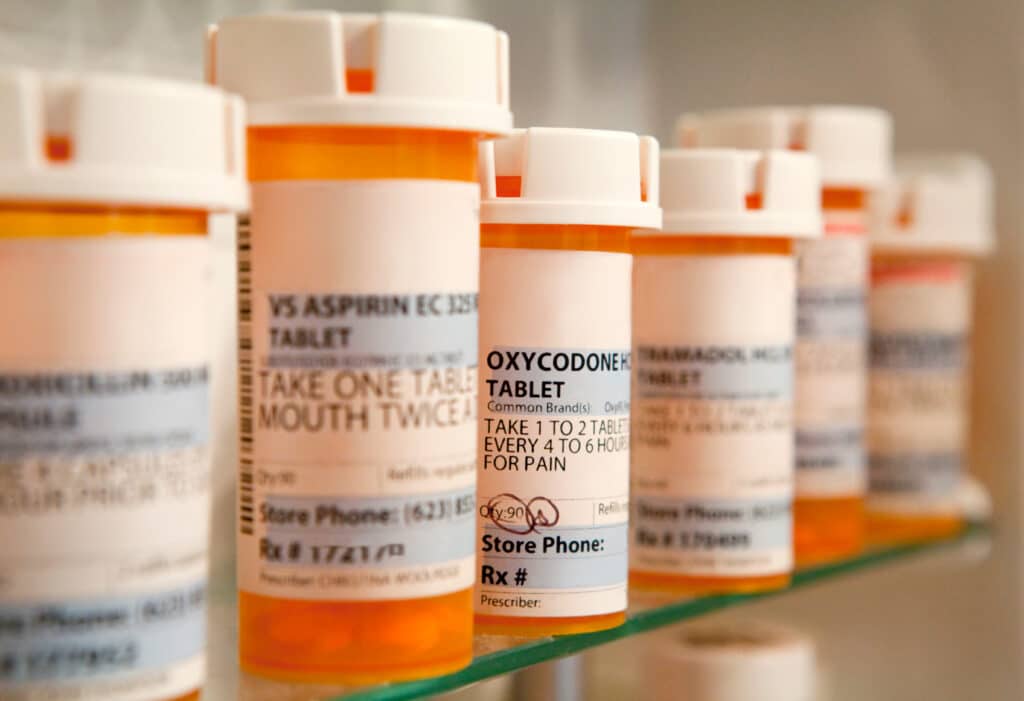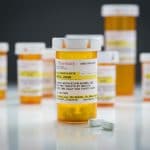About 66% of Americans use prescription drugs. Some of these medications can have serious side effects, including drug addiction (substance use disorder) and overdose, especially if you misuse them. Here are seven of the most dangerous drugs available by prescription.
1. Opioids
Prescription opioids are analgesics (prescription painkillers) that treat moderate-to-severe pain.
While they work very well, they pose a high risk of abuse, addiction, and fatal overdose. They can also cause harmful side effects such as confusion, dizziness, and severe drowsiness. That’s why most doctors only prescribe opioids for short-term use.
The most commonly prescribed opioids include:
- codeine
- hydrocodone (brand name Vicodin)
- hydromorphone (Dilaudid)
- morphine
- oxycodone (OxyContin or Percocet)
- oxymorphone (Opana)
As central nervous system depressants, opioids slow down your breathing and heart rate. At high doses, they may slow these functions to a life-threatening degree.
Fentanyl
In recent years, the synthetic opioid fentanyl has caused an unprecedented surge in drug overdose deaths. According to the Centers for Disease Control and Prevention (CDC), fentanyl is up to 50 times stronger than heroin. It’s often laced in street drugs such as heroin and methamphetamine.
2. Benzodiazepines
Like opioids, benzodiazepines (or “benzos”) slow down your central nervous system. However, instead of treating pain, they treat anxiety, seizures, and insomnia (trouble sleeping). The most common benzodiazepines include:
- alprazolam (Xanax)
- clonazepam (Klonopin)
- diazepam (Valium)
- lorazepam (Ativan)
These prescription medications pose a high risk of physical dependence, especially if you take them for a long time or at high doses. Physical dependence means your body starts relying on benzodiazepines to function normally.
If you stop using them, you may experience withdrawal symptoms such as:
- irritability
- anxiety
- panic attacks
- trouble sleeping
- trouble concentrating
- sweating
- shaking
- muscle pain
Also, even if you don’t become physically dependent on them, benzodiazepines can have dangerous side effects, including memory problems, loss of control of bodily movements, and slowed breathing or heartbeat.
3. Prescription Stimulants
Prescription stimulants are used to treat attention-deficit/hyperactivity disorder (ADHD) and narcolepsy (excessive sleepiness). They increase your energy, alertness, and ability to focus. Some of the most common prescription stimulants include:
- amphetamine/dextroamphetamine (Adderall)
- dextroamphetamine (Dexedrine)
- lisdexamfetamine (Vyvanse)
- methylphenidate (Ritalin or Concerta)
At high doses, these drugs can have harmful side effects, including high blood pressure, seizures, irregular heartbeat, and heart failure. People who use prescription stimulants in a manner not prescribed may also experience:
- anger and aggressiveness
- paranoia
- delusions (beliefs that aren’t based in reality)
- hallucinations (seeing, hearing, or feeling things that aren’t there)
- heart attack
- stroke
Also, misusing prescription stimulants (or using them as prescribed for a long period of time) can lead to addiction.
4. Ambien
If you have trouble sleeping, your doctor might prescribe a medication called zolpidem. Sold under the brand name Ambien, this medication promotes sleep by slowing down brain activity. It can have dangerous side effects, especially if you misuse it. These effects may include:
- shortness of breath
- rash, hives, or itching
- swelling of the face, eyes, lips, tongue, or throat
- trouble breathing or swallowing
- chest pain
- pounding heartbeat
In addition, if you take too much Ambien, you may overdose. Common symptoms of an Ambien overdose include drowsiness, slowed breathing or heartbeat, and loss of consciousness.
5. Acetaminophen
Better known as Tylenol, acetaminophen is a pain reliever and fever reducer. While you can purchase milder versions of acetaminophen over the counter, stronger versions require a prescription.
Although acetaminophen is generally safe, it sometimes has serious side effects, including:
- hoarseness
- trouble breathing or swallowing
- rash, hives, or itching
- red, peeling, or blistering skin
- swelling of the face, eyes, lips, tongue, throat, lower legs, ankles, or feet
Also, if you take too much acetaminophen, you may experience liver damage. In some cases, this damage may be life-threatening.
6. Barbiturates
Barbiturates are sedative drugs used to treat anxiety, seizures, and insomnia. Popular in the 1960s, they are no longer commonly prescribed. That’s because they pose a high risk of drug abuse and addiction. They also have a variety of side effects, which may include:
- drowsiness
- dizziness
- slurred speech
- loss of coordination
- poor judgment
- trouble thinking
- confusion
- memory loss
In addition, these medications can cause a life-threatening overdose. Common signs of barbiturate overdose include shallow breathing, clammy skin, and loss of consciousness.
7. Antidepressants
As the name suggests, antidepressants are prescribed to treat symptoms of depression. They can also help treat other mental health conditions, including obsessive-compulsive disorder (OCD) and post-traumatic stress disorder (PTSD).
Some people who take these medications experience little to no side effects. However, others develop issues such as:
- anxiety
- loss of appetite
- trouble sleeping
- sexual dysfunction, including loss of libido and difficulty achieving orgasm
- emotional numbness
Also, some antidepressants can cause physical dependence. If you stop using them, you might experience withdrawal symptoms like headache, fatigue, and nausea.
If you or someone you love struggles with prescription or illicit drug use, please reach out to Northeast Addictions Treatment Center. Our board-certified healthcare providers offer medical detox, mental health counseling, and other substance abuse treatment options to help you or your loved one thrive.





